Puddle reflection photography, or “puddlegrams” as they’re referred to on Instagram, has become incredibly popular in the world of mobile photography. Reflections in water are captivating because of the strong symmetrical compositions and natural painterly effects that you can achieve. But you don’t need large bodies of water to take such photos – a simple puddle is all that’s required! In this tutorial, you’ll discover all you need to know about taking the perfect puddlegram with your iPhone.
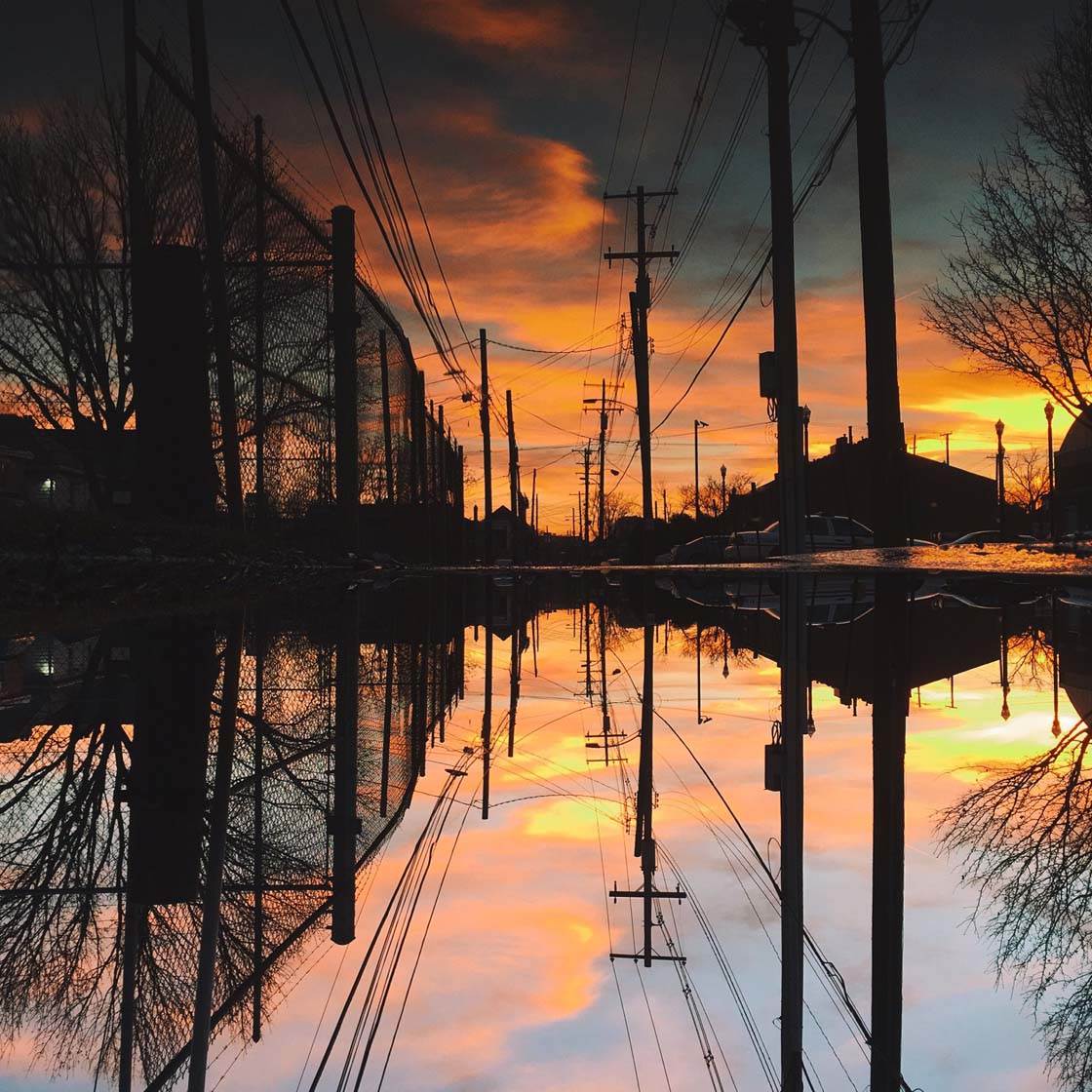
So why have puddlegrams become so popular with mobile photographers over the past couple of years? One reason is the accessibility of the mobile camera – our iPhone is always within our reach when we want to capture a particular moment in time.
If you’re walking down the street and see a great reflection in a puddle, you can instantly take a photo of it with your phone.

Capturing puddlegrams with your iPhone camera may also be more popular due to the fact that the lens can get significantly closer to the surface of the water than any other camera.
When attempting puddle photography, always remember that your image can be simple and straight forward, or more in-depth with detail and illusion. Whatever catches your eye in a puddle reflection is likely to make a great photo.

So let’s take a look at seven tips for capturing stunning iPhone photos of reflections in puddles.
1. Find The Perfect Puddle
Whether you’re purposely on the hunt for the perfect puddlegram or meeting a friend for coffee, still and smooth puddles, large or small, are never far away. Look for puddles that have objects nearby such as buildings, cars, trees, people, etc. so that you can capture their water reflection.
When you come across a puddle, check to see that there aren’t a lot of interfering floating clods of dirt, cigarette butts, large twigs, etc. Anything that might take away from or obstruct your photo is generally undesirable, although in certain situations these things can help your photo.
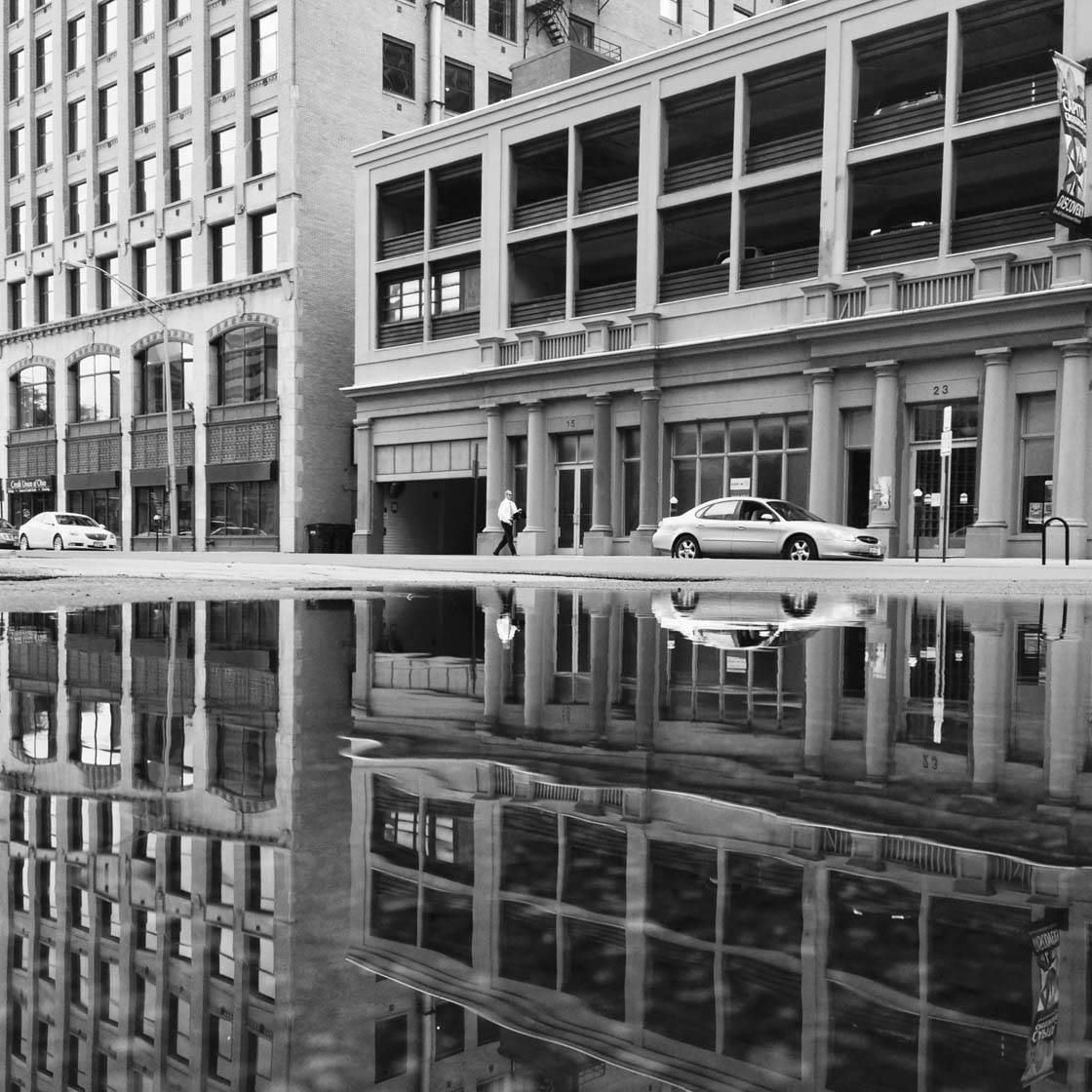
When shooting a puddle reflection, I try to make sure there aren’t too many leaves or items of trash peaking above the water’s surface. This ensures you have an uninterrupted glass-like surface for your reflection.
Some of the best puddles that I’ve come across have been found in alleyways or even underground tunnels. Areas that have the least amount of contact with wind typically work the best because these puddles have the smoothest and calmest of water surfaces.

Parking garages and parking lots can also be a great place to spot a puddle worth photographing. If you’re lucky like me, you’ll come across a puddle where the water and oil from a car mixes, creating an amazing and abstract effect.
2. Shoot From Different Perspectives
Taking photos of puddles doesn’t always have to be from straight-on. Crouch down and shoot from a really low angle, with the iPhone held just above the water’s surface. Get creative and look for different angles and perspectives. Every angle of a puddle reveals something new.
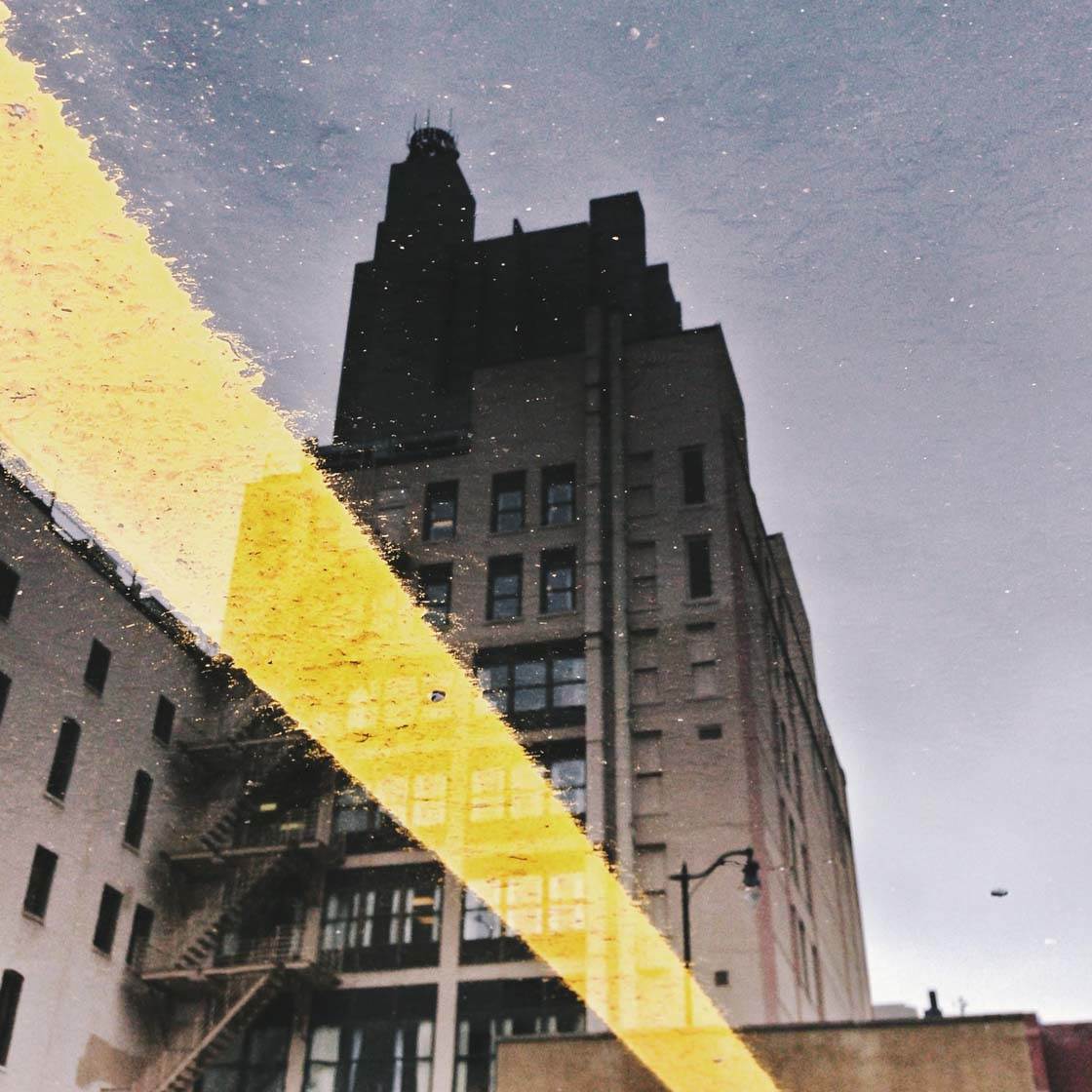
Also, keep in mind that your camera lens on your iPhone is located at the top corner of your phone, so try playing around and flipping your iPhone upside-down to get the lens as close to the water as possible.
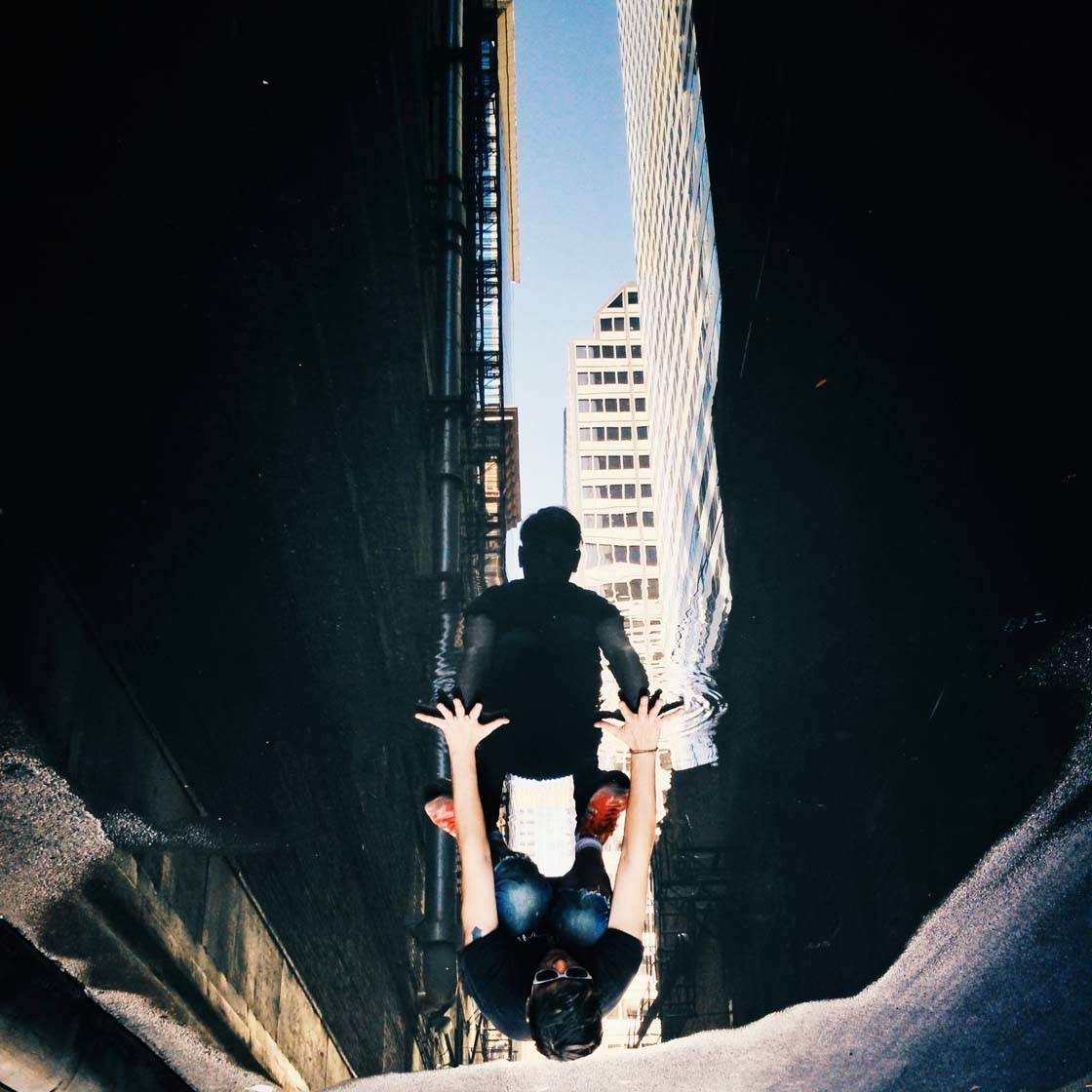
If you’re shooting a subject such as a person, don’t be afraid to position and pose them in different areas of your frame to exaggerate the surrounding landscape.
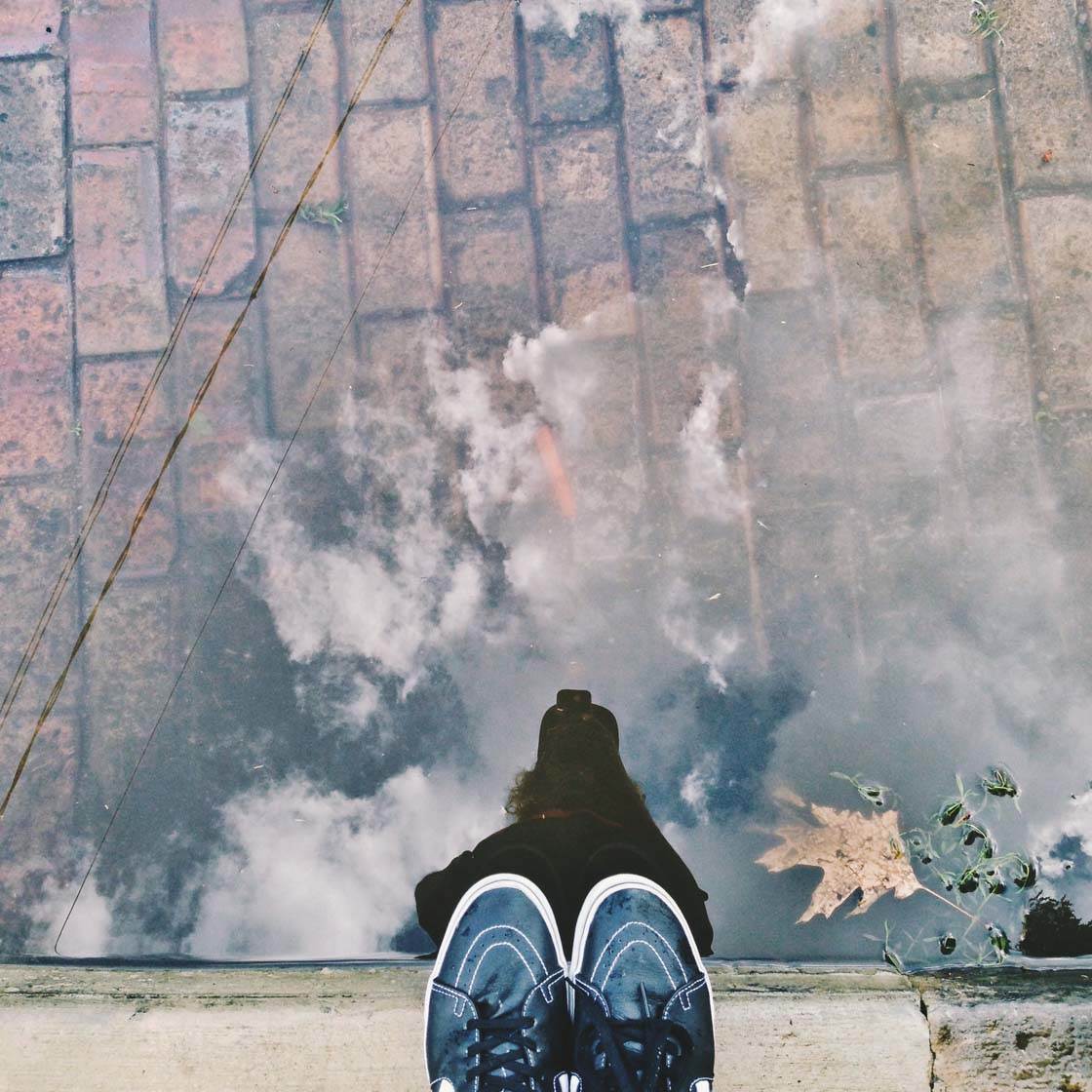
Another effective technique is to take a photo of the puddle from directly above. This can allow you to include yourself in the reflection and take a “puddle selfie.” Above is an example of one that I took from above, including my feet and the reflection of myself in the frame.
3. Shoot When The Light Is Right
Shooting puddle reflections outside can be tough if you attempt to shoot on a sunny day when the light is too harsh or bright. Try shooting during the golden hours – early in the morning during sunrise or just before sunset will give you the best results.
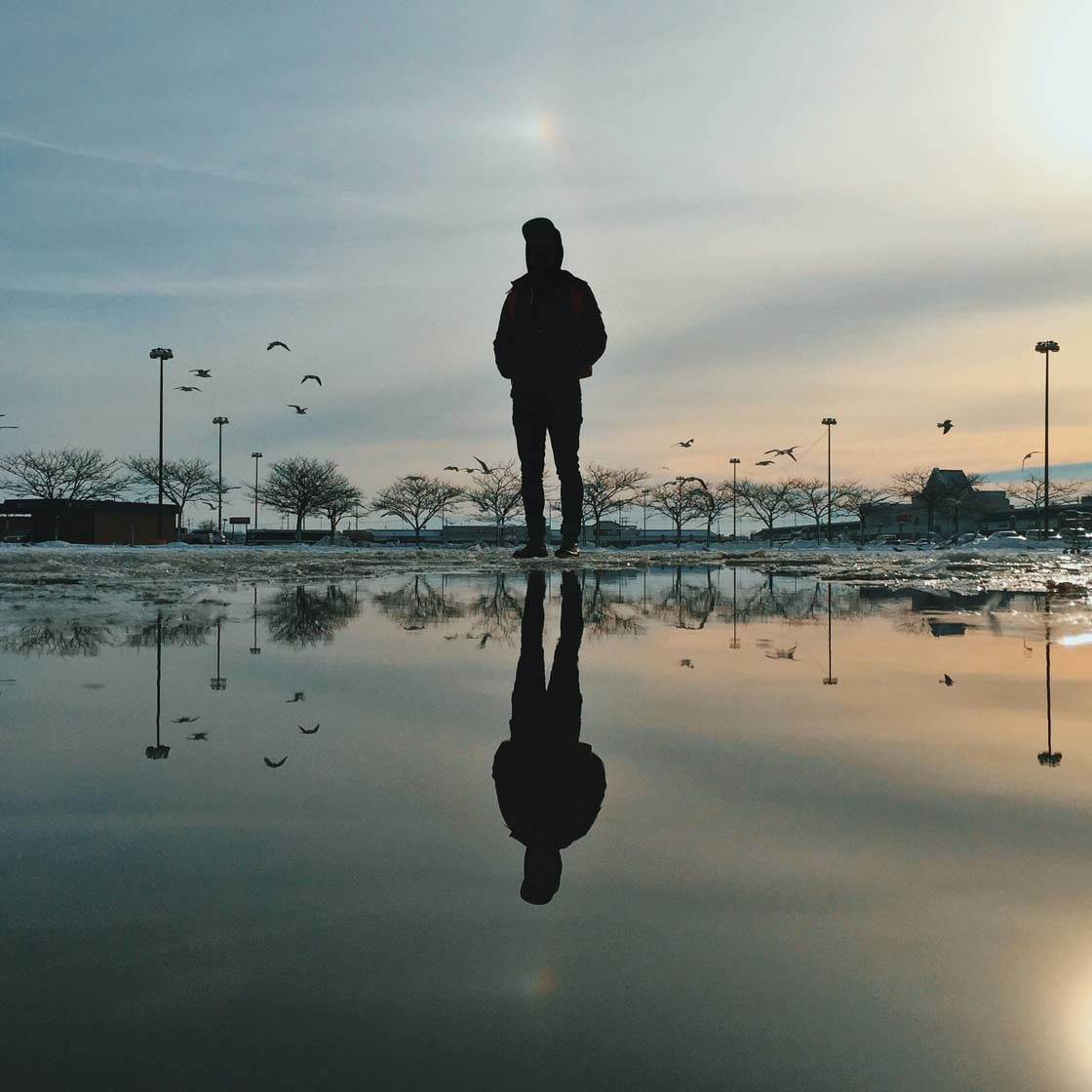
Also, waiting until the sun is just at the horizon can heighten stunning silhouettes and bring out the best color and shadows in your photos.
Timing is everything. Taking puddle reflection imagery at the right time of day could also mean waiting until right after a rainstorm or even right before the storm stops.

The clouds can help create really dramatic skies and a little bit of rain can help create unique and abstract compositions within your photos. Try shooting with the HDR option turned on to boost drama and vibrance in your colors.
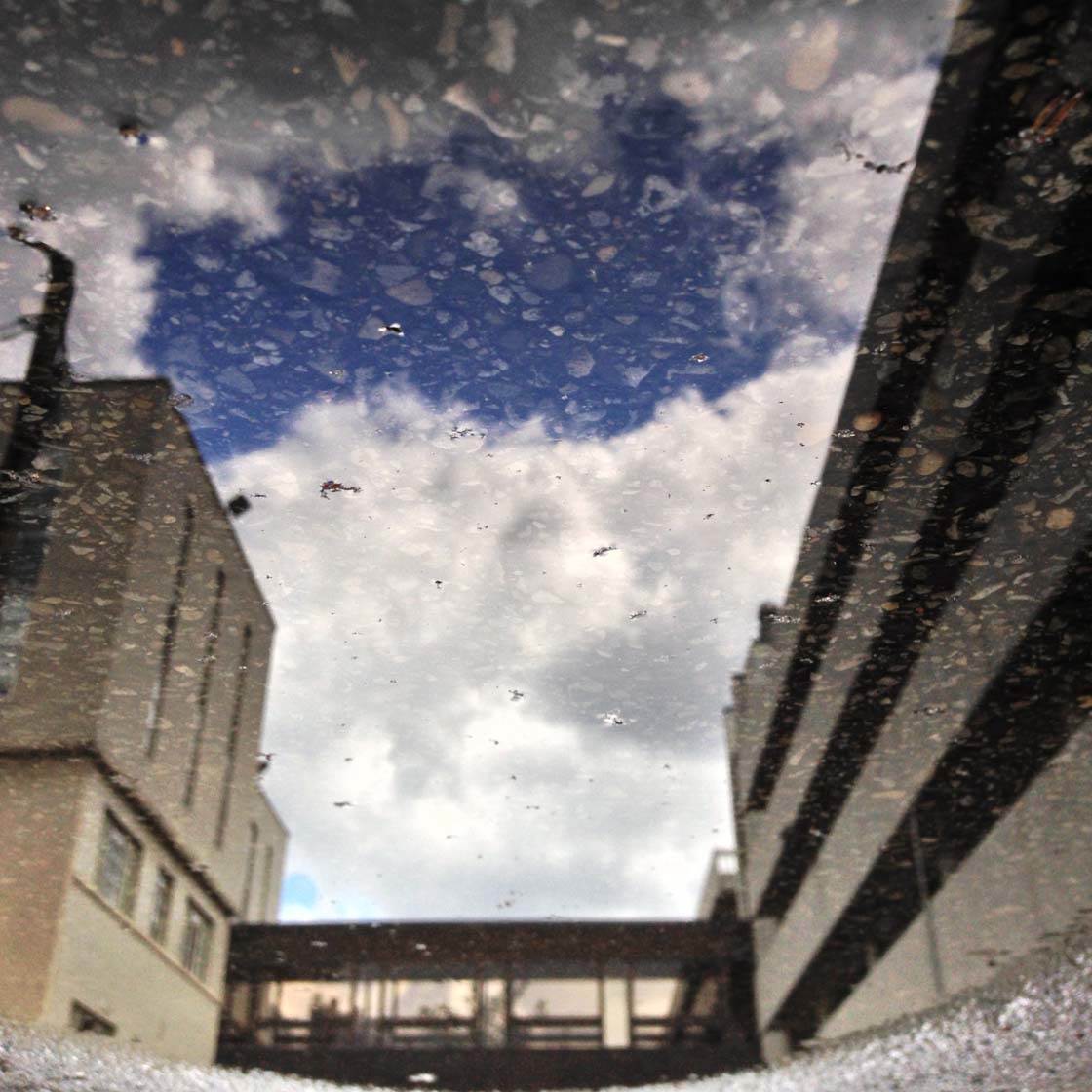
4. Look For Symmetry
Some of the best places to find symmetry are around buildings. Use the grid in your iPhone’s camera app to line up windows and doors of buildings to get the alignment just right. You can switch the camera’s grid on by going to Settings > Photos & Camera > Grid.
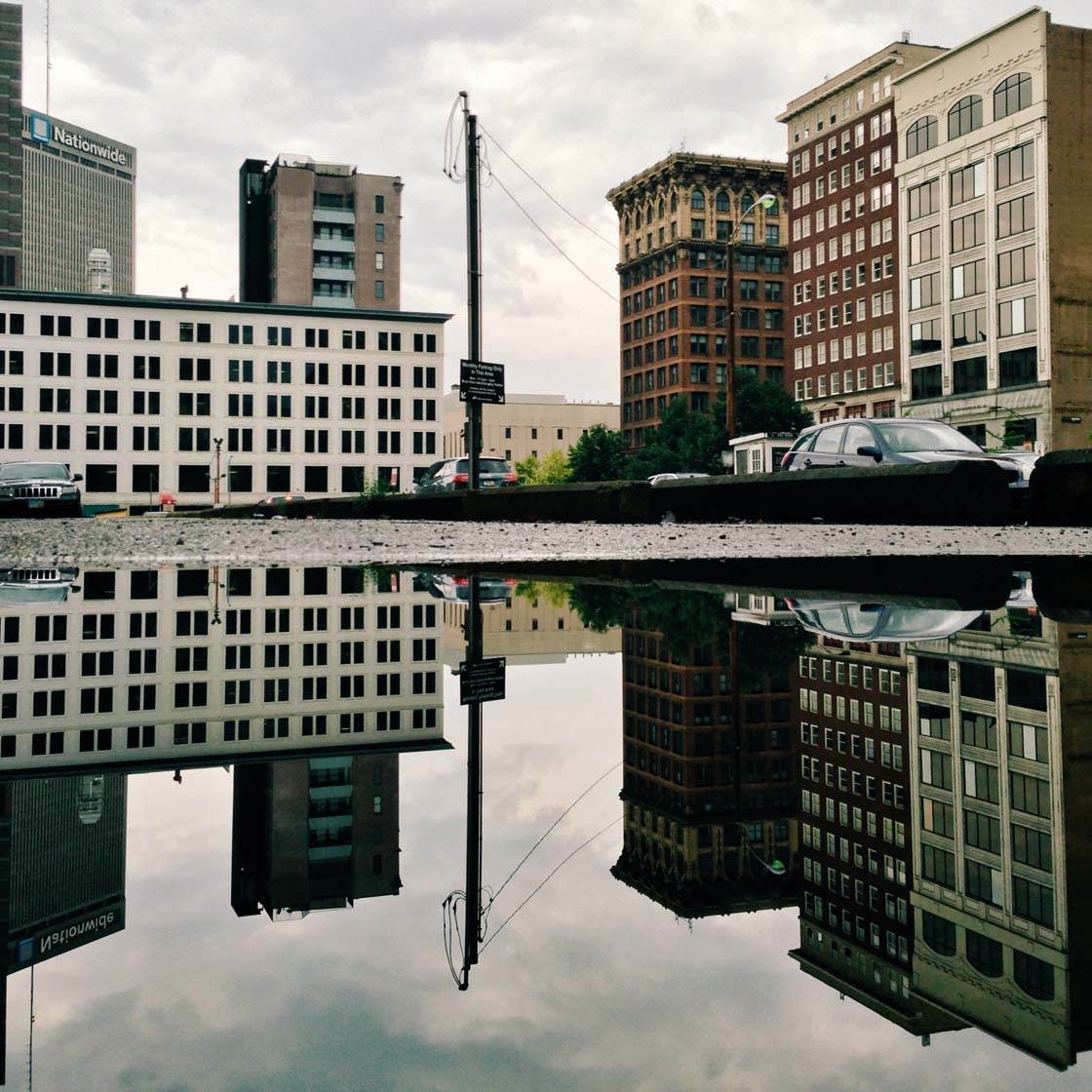
Puddlegrams can be fun because you don’t always have to follow the rule of thirds. Splitting an image directly in half with the reflection on the bottom or top is often the best composition technique for symmetrical reflection photos.
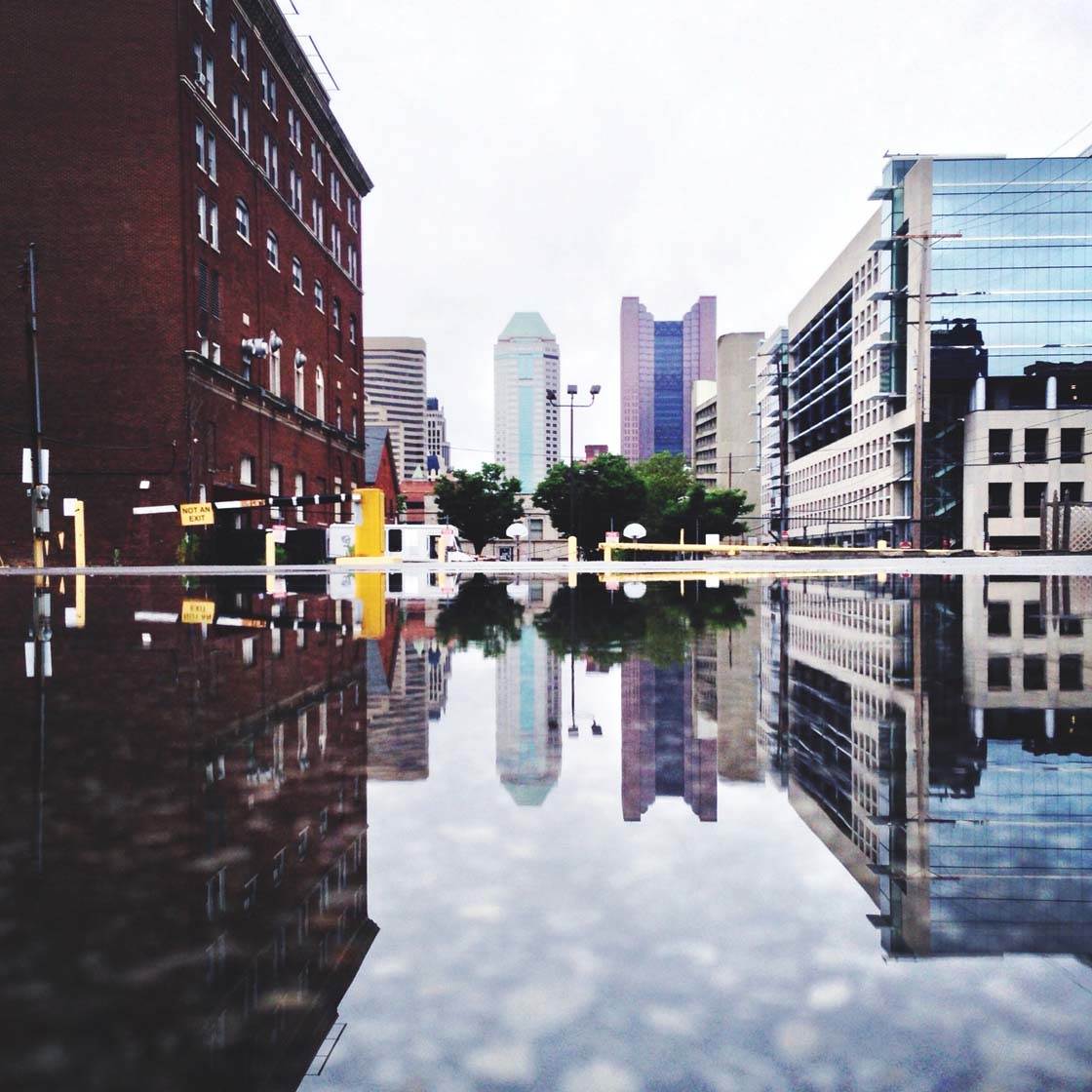
Don’t forget, you can find puddles anywhere. So the next time you find yourself in a parking lot surrounded by puddles, try using the lampposts and signposts to create symmetry.
5. Shoot At Night
Shooting puddles at night can be tricky, but when you get it right they can result in really interesting captures. When shooting at night, look for lights that can illuminate your subject or landscape. Street lights, car lights, and lights from buildings are just a few things you can look for.
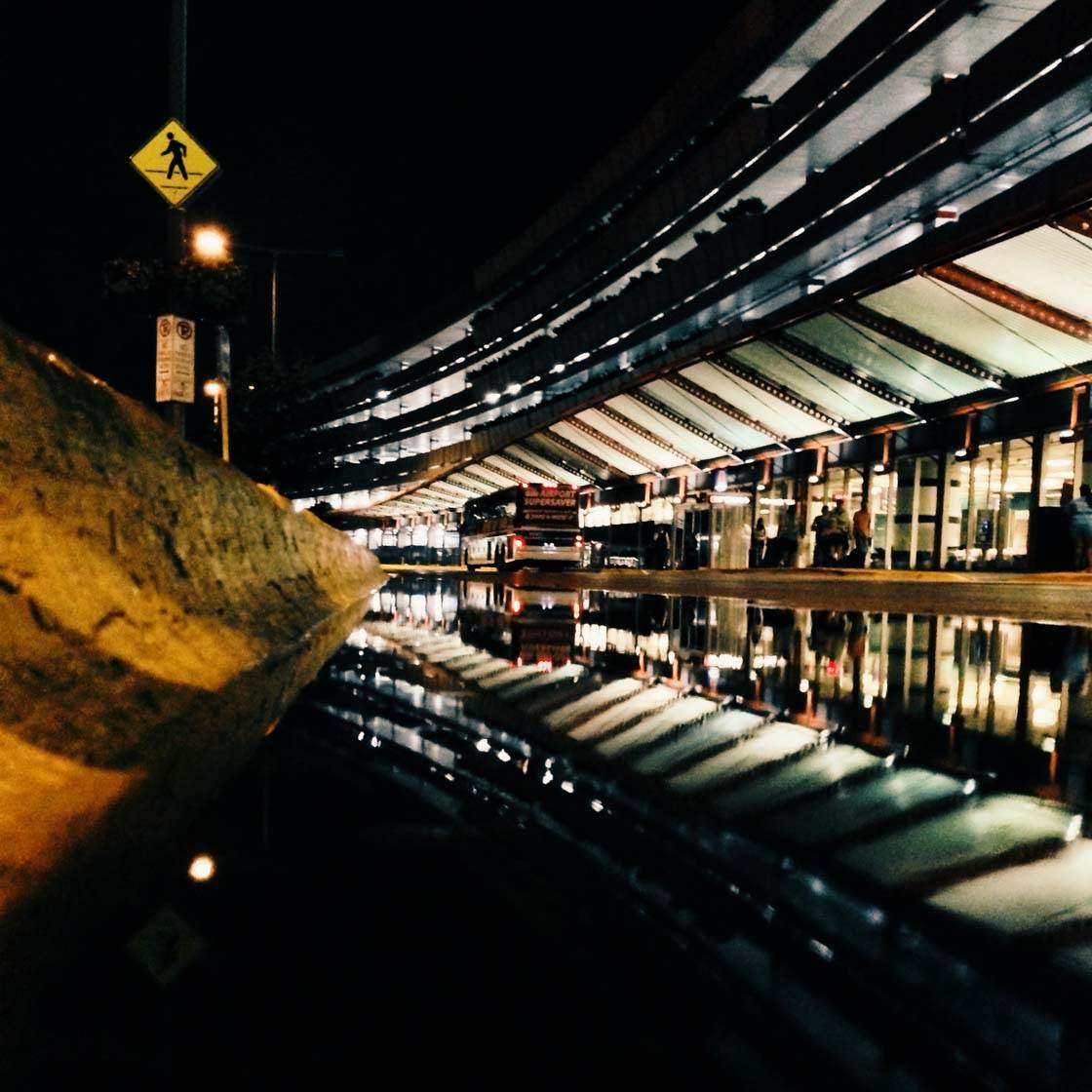
Use the focus/exposure lock feature on your iPhone to tap on the light source – this sets exposure for the highlights and helps to reduce grain. If you need to tweak the exposure further, slide your finger up or down on the screen to either reduce or brighten the light.
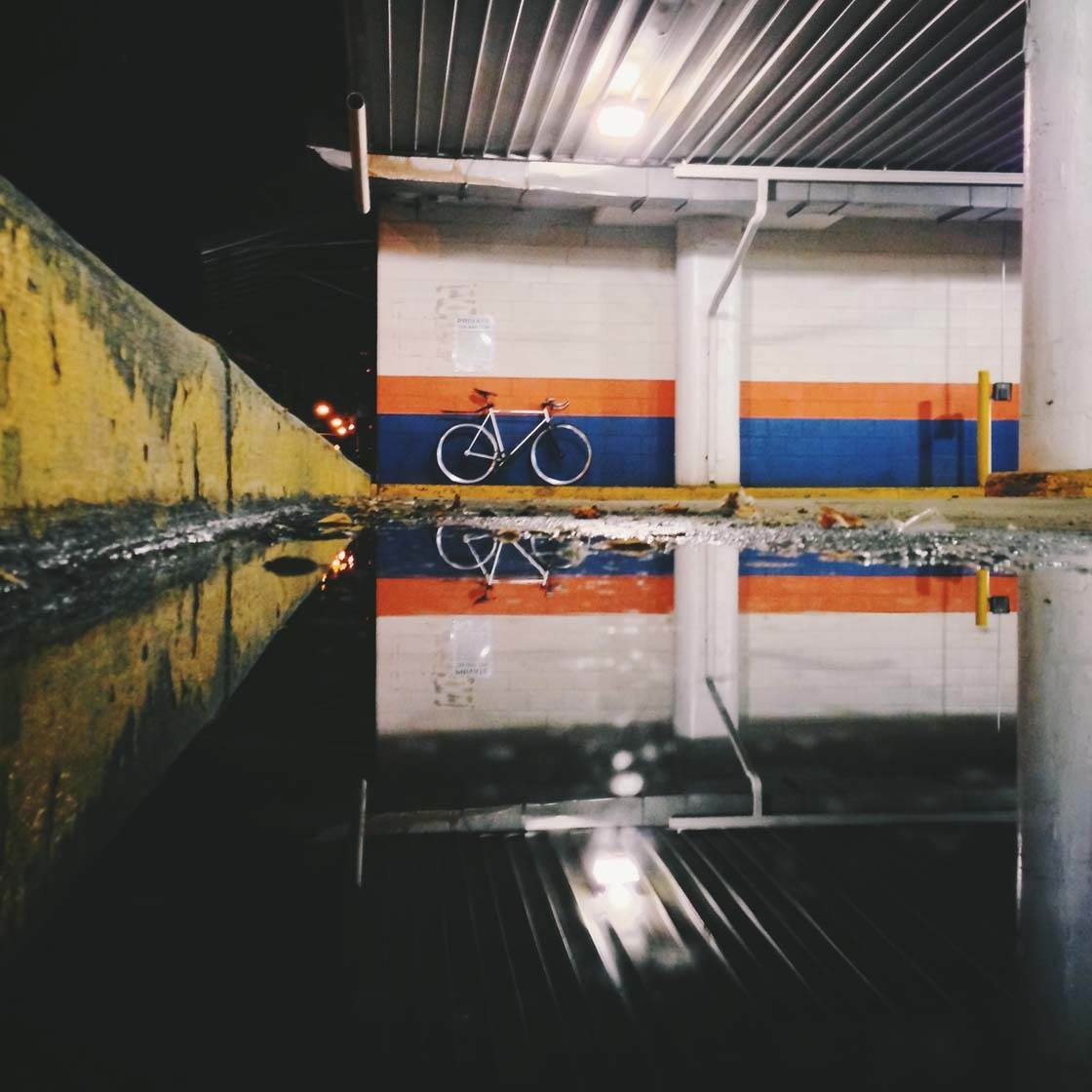
Taking photos in low light requires slower shutter speeds which can result in camera shake and blurry images. If you struggle to hold your iPhone still enough while shooting at night, consider using an iPhone tripod to steady your camera. A small tripod such as the Joby GorillaPod is perfect as your iPhone can remain low to the ground.
6. Enhance Your Images In Post-Processing
When editing puddle pictures, the first thing you want to do is crop and straighten. Straightening the horizon in your image can help perfect the symmetry within the shot. You can use an editing app such as Snapseed to do this (check out our Snapseed tutorial).
Another great tool within the Snapseed app is the Tune Image tool. This will help you to correct brightness, contrast and saturation. One helpful way to make the puddle reflection less dark is to bump up the shadows within the Tune Image tool.

If the puddle reflection appears murky, you can use the Selective Adjust tool in Snapseed to select the reflection and make alterations without affecting the rest of the image.
The Drama Tool in Snapseed can help eliminate shadows and make the overall landscape more prominent. Be careful not to use too much of this tool as it can make your photos look grainy and over-edited.
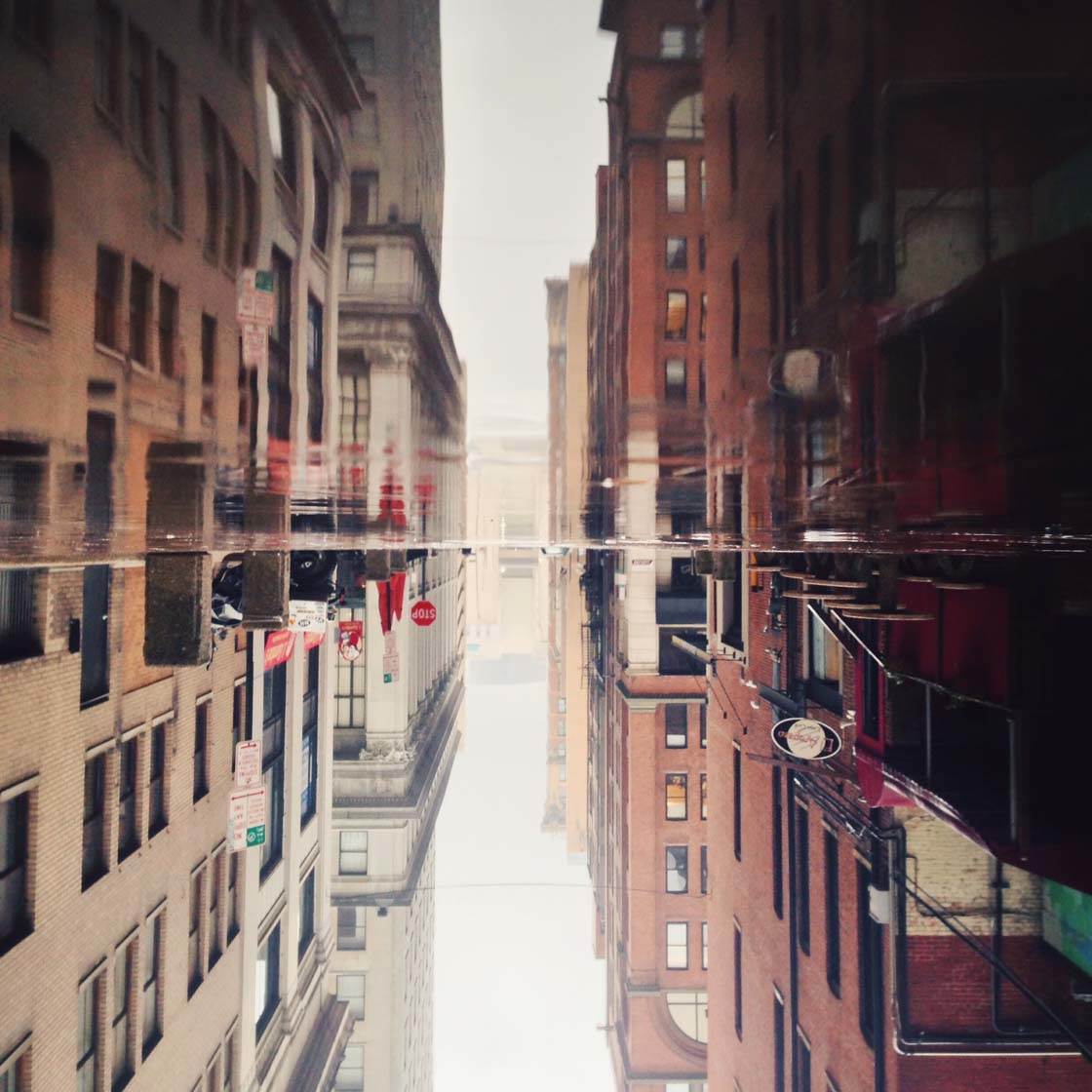
Rotating the photo to flip it upside down is a fun way of creating an unusual and intriguing image. The slightly painterly reflection at the top of the image, rather than where it would normally be at the bottom of the frame, will hold the viewer’s attention for longer while they work out what’s going on.
If you decide to post your picture to Instagram, you can also use the editing tools available to fix any issues. The shadows and highlights tools are really helpful in making the reflection more clear and bright.
7. One Last Thing… Don’t Drop Your iPhone!
Obviously, when shooting around water you always need to be careful not to drop your iPhone, even if it is just a shallow puddle! iPhones and water don’t mix, so hold onto your phone tightly when photographing directly above puddles.
You might want to consider investing in an iPhone case that you can attach a wrist strap to. A tripod might also be helpful, but be careful not to knock it over! You can of course buy waterproof cases for your phone if you want to be super safe.
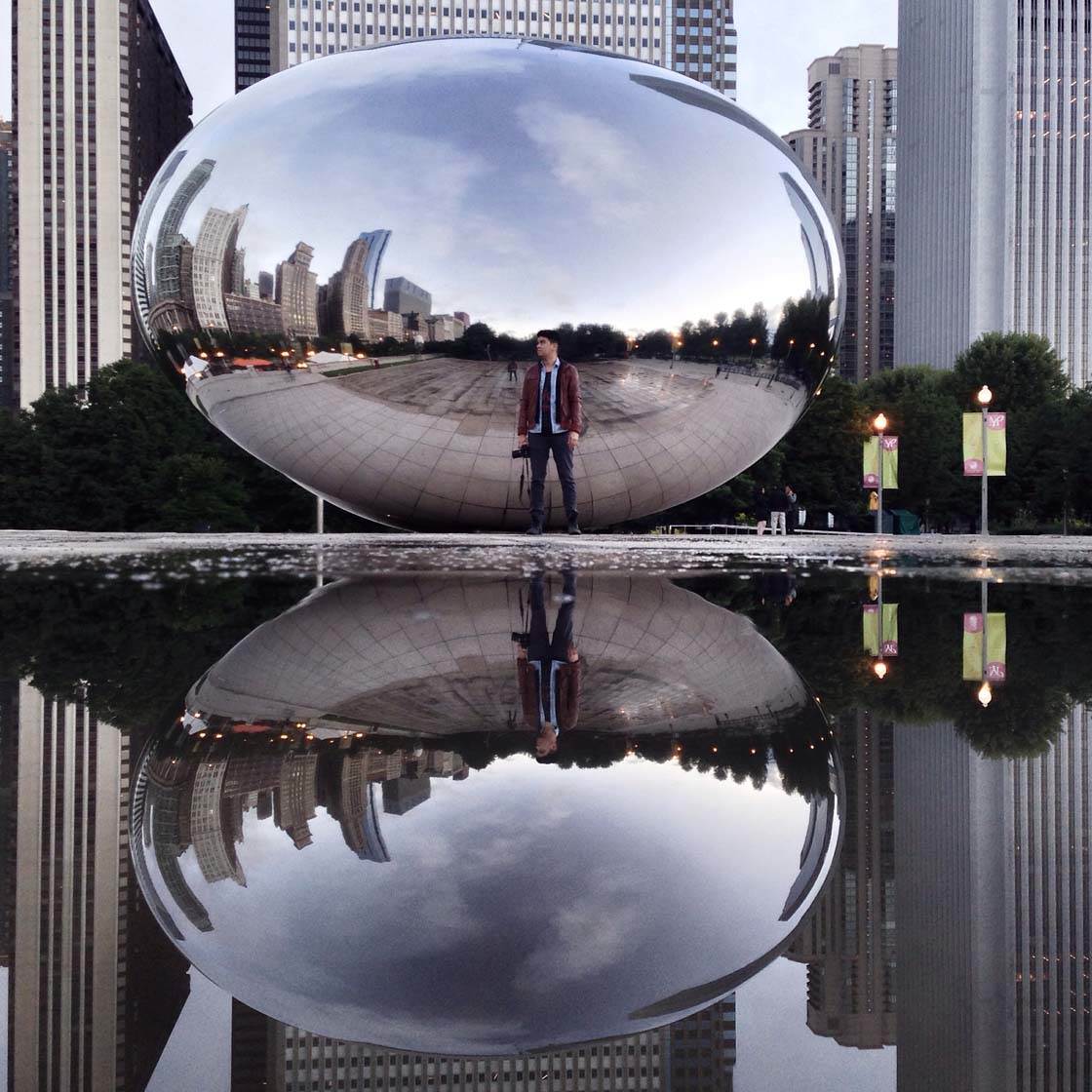
So know that you know how to take stunning puddlegrams with interesting reflections and symmetrical compositions, why not get out there with your iPhone and find the perfect puddle? You’ll be amazed at the results!
Of course, you can use these tips for photographing reflections in other sources of water such as lakes, ponds and slow moving rivers. But puddles are often easier to find and are normally closer to objects such as buildings, signposts and people that make great reflections.
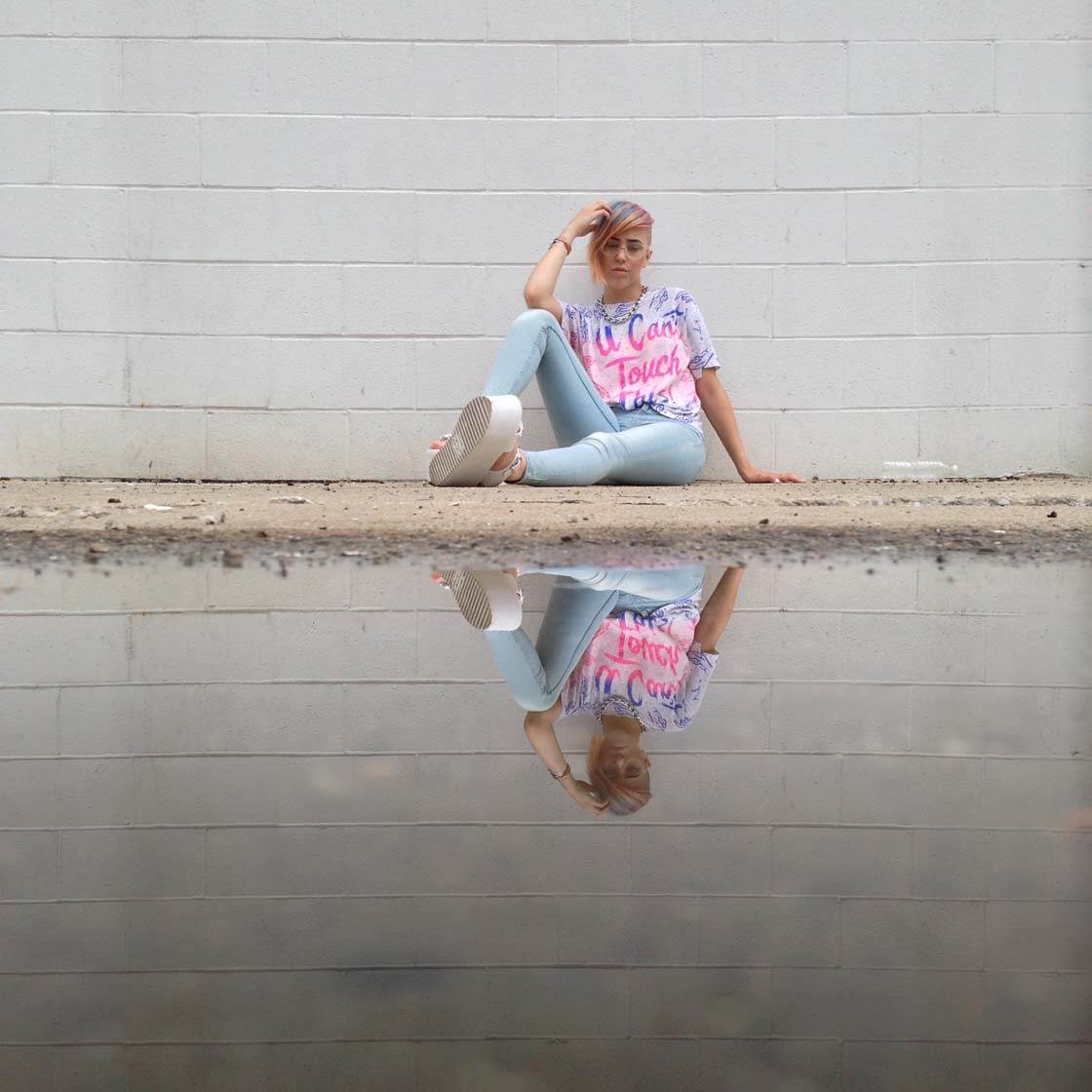


Thanks for these great tips and examples Adam. Puddlegrams are one of my favorite types of photography – symmetrical reflections can be so mesmerizing!
Great tips Adam! Flipping the iPhone upside down to the get lens closer to the surface makes a big difference.
Once again great article. I am learning a lot. Thanks
Thanks Adam . Your photos are fantastic.